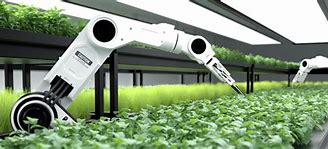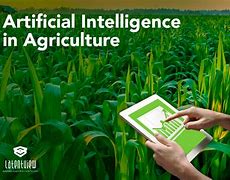Introduction: AI Applications in Enhancing Seed Selection Processes
In the ever-evolving world of agriculture, technological advancements are playing a pivotal role in shaping how farmers approach their work. One of the most exciting developments in this field is the application of Artificial Intelligence (AI) in enhancing seed selection processes. Seed selection, a crucial component of crop cultivation, directly impacts the yield, quality, and sustainability of crops. Traditional seed selection relied on manual methods and farmers’ intuition, but with the advent of AI, this process has been revolutionized.
By integrating AI algorithms, machine learning, and big data analysis, seed selection has become more precise, efficient, and data-driven. AI helps in predicting which seeds will thrive under specific conditions, ensuring higher crop productivity while minimizing environmental impacts. This article explores how AI is transforming seed selection, its benefits, challenges, and future prospects in agriculture.

What is AI in Agriculture?
Defining AI in Agriculture
AI in agriculture refers to the use of artificial intelligence technologies—such as machine learning, computer vision, robotics, and natural language processing—to optimize farming processes. These technologies allow machines and algorithms to simulate human intelligence, analyze vast amounts of data, and make decisions based on that data. In the context of seed selection, AI helps farmers analyze various factors that influence seed viability and crop performance, thereby streamlining the decision-making process.
The Role of Machine Learning in Seed Selection
Machine learning (ML) is a subset of AI that focuses on the development of algorithms that can learn from data and make predictions. When applied to seed selection, machine learning models can analyze past crop performance data, environmental conditions, and even genetic information to predict which seeds will perform best in specific soil types and climates. This ability to predict and optimize seed selection increases crop yield and quality while reducing resource wastage.
How AI Improves Seed Selection
Precision Seed Selection
AI-powered seed selection systems can assess a wide range of factors that influence seed viability, such as genetic makeup, environmental conditions, and soil quality. Traditional methods of seed selection relied on trial and error, but AI enables precision farming by analyzing data from sensors, weather forecasts, soil health monitors, and historical crop performance. The AI algorithms can suggest the best seed variety for specific fields, ensuring the highest probability of success.
Genetic Analysis for Better Crop Varieties
AI plays a crucial role in the analysis of genetic data. By studying the genetic makeup of different seed varieties, AI can identify the traits that are most beneficial for the local environment. For example, seeds that are resistant to drought, pests, or diseases can be selected more easily using AI’s ability to analyze large datasets and predict how certain genetic traits will influence crop performance. This leads to the development of crop varieties that are more resilient and better suited to local climates and farming conditions.

Environmental Factors and Climate Adaptability
The climate is one of the most significant factors affecting crop yield. Traditional seed selection might rely on a farmer’s knowledge of local weather patterns, but AI can take into account much more complex and dynamic environmental factors. Using data from satellites, weather stations, and sensors placed in fields, AI can predict the future climate conditions and recommend seed varieties that are most likely to perform well in these conditions. This adaptability to changing climates is crucial for sustainable farming practices, especially with the challenges posed by climate change.
Benefits of AI-Driven Seed Selection
Increased Yield and Quality
The primary benefit of AI in seed selection is the potential for increased crop yield and quality. By accurately predicting the most suitable seeds for specific conditions, AI ensures that farmers are planting seeds that will perform optimally, leading to healthier plants and higher-quality produce. This increases the overall efficiency of farming operations, reduces waste, and improves food security.
Reduced Costs
While the initial investment in AI technology may seem high, it has the potential to reduce costs in the long run. By selecting the right seeds for the right conditions, farmers can reduce the need for excessive irrigation, fertilization, and pesticide use. Additionally, AI helps in optimizing planting schedules and minimizing crop failure risks, reducing the financial losses that farmers may face due to poor seed choices.
Sustainable Farming Practices
AI also plays a key role in promoting sustainable farming practices. By selecting seeds that are better suited to local environments, AI helps farmers reduce the environmental impact of their operations. For example, AI can recommend drought-resistant seeds, reducing the need for water-intensive crops and promoting more water-efficient farming practices. Similarly, AI can help in choosing seeds that are less reliant on chemical pesticides and fertilizers, promoting organic and sustainable farming methods.
Key AI Technologies in Seed Selection
Computer Vision and Image Recognition
One of the most exciting applications of AI in agriculture is the use of computer vision and image recognition. By using high-resolution images from drones or field cameras, AI systems can analyze plant health, growth patterns, and environmental conditions. This technology helps farmers assess which seeds are performing well and adjust their seed selection for future crops. Through continuous monitoring, AI can even detect early signs of disease or pest infestations, allowing for timely intervention.

Big Data and Predictive Analytics
AI thrives on data, and when it comes to seed selection, data is key. Big data from various sources—such as weather forecasts, soil sensors, and satellite imagery—can be fed into AI systems to create predictive models that help farmers make better decisions. These models can forecast crop performance, yield potential, and even the best planting times, giving farmers a significant advantage in their seed selection process.
Robotics and Automation
Robotics and automation are transforming various aspects of agriculture, including seed selection. AI-powered robots equipped with sensors can assist in planting, monitoring, and harvesting crops. These robots can analyze soil conditions, plant health, and other factors in real-time, allowing farmers to make immediate adjustments to their seed choices and planting strategies. By automating routine tasks, farmers can focus more on decision-making, optimizing overall farm management.
Challenges in AI-Driven Seed Selection
Data Privacy and Security
With the increasing use of AI in agriculture, concerns about data privacy and security have also risen. Farmers are collecting vast amounts of data about their fields, crops, and operations, which is essential for AI systems to make accurate predictions. However, this data can also be vulnerable to cyber threats and misuse. Ensuring that data is kept secure and used ethically is an important challenge that the agricultural industry must address as AI technologies become more prevalent.
High Initial Costs
While AI can offer long-term cost savings, the initial investment required for implementing AI-driven seed selection systems can be a barrier for many small-scale farmers. AI technologies, such as sensors, drones, and machine learning software, can be expensive to acquire and maintain. Governments, agricultural organizations, and private companies must work together to provide financial support and training to help farmers adopt these technologies.
Technological Integration and Adaptation
AI technologies are continually evolving, and integrating them into existing agricultural practices can be a complex task. Many farmers may not have the technical expertise needed to fully leverage AI tools, and there may be resistance to change due to a lack of familiarity with these new technologies. Training and education will be critical to ensuring that farmers can effectively use AI to enhance their seed selection processes.
Future Prospects of AI in Seed Selection
Advancements in Genetic Engineering and CRISPR
As AI continues to advance, it is likely that we will see even greater innovations in seed selection, particularly in the realm of genetic engineering. Techniques like CRISPR gene editing allow for the precise alteration of plant genomes, and AI can help identify which genetic modifications will yield the best results. By combining AI with genetic engineering, it may be possible to create crops that are more resistant to pests, diseases, and environmental stresses, further improving food security and sustainability.
The Role of AI in Climate Change Adaptation
As climate change continues to alter growing conditions, AI will play an increasingly important role in helping farmers adapt. With its ability to predict weather patterns, monitor soil health, and select the most suitable seeds, AI will be a critical tool in ensuring that crops can thrive in changing climates. By improving seed selection processes, AI will help farmers mitigate the effects of climate change and continue to produce food in a sustainable manner.
Read this: AI in Supply Chain Optimization for Agricultural Products
Conclusion: AI Applications in Enhancing Seed
AI has already made a significant impact on the seed selection process, and its potential to revolutionize agriculture is immense. By leveraging machine learning, big data, robotics, and other cutting-edge technologies, AI is enabling farmers to make more informed decisions about which seeds to plant, leading to higher yields, better crop quality, and more sustainable farming practices. While challenges such as high costs and data security concerns remain, the benefits of AI-driven seed selection are undeniable. As the technology continues to evolve, it holds the promise of a future where farming is more efficient, sustainable, and capable of meeting the demands of a growing global population.
FAQs
1. How does AI help in seed selection?
AI helps in seed selection by analyzing a wide range of data, including environmental conditions, soil quality, and genetic traits, to predict which seeds will perform best in specific locations.
2. What are the benefits of using AI for seed selection?
The main benefits include increased crop yield, improved seed quality, reduced resource usage, and more sustainable farming practices.
3. Are AI-based seed selection systems expensive?
While initial costs can be high, the long-term savings and increased productivity often make AI-based systems a worthwhile investment for farmers.
4. Can AI predict how a seed will perform in different climates?
Yes, AI can analyze historical weather data and other environmental factors to predict how different seed varieties will perform in various climates.
5. What is the role of genetic engineering in AI-driven seed selection?
AI can assist in identifying which genetic modifications will improve crop performance. And when combined with techniques like CRISPR, it can create genetically optimized seeds. That are more resilient to pests and diseases.


